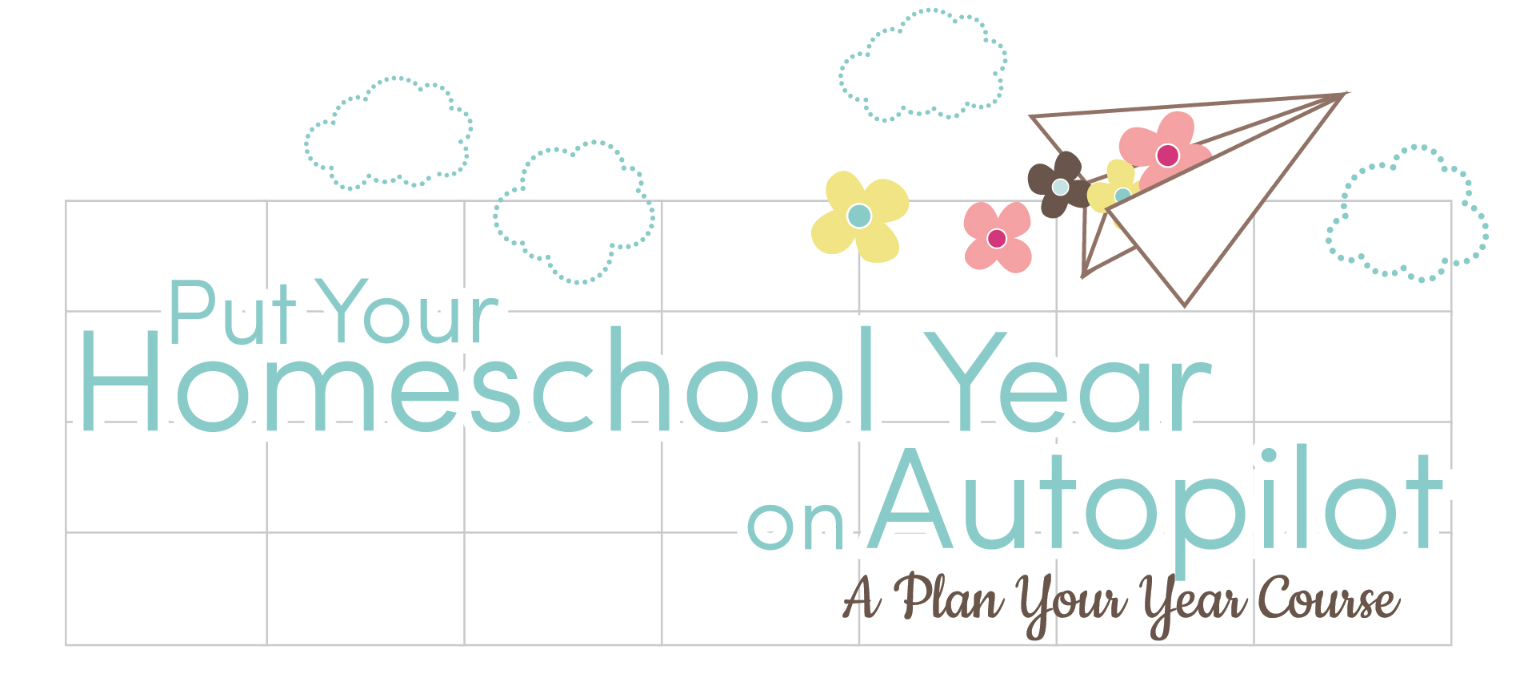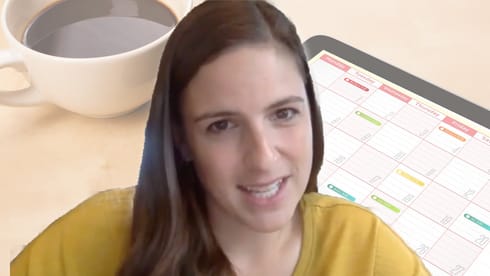How to lesson plan so you're never behind

Write simple homeschool lesson plans that are easy to follow and never out-of-date. Beat discouragement by never being “behind” on your lesson plans!
Some homeschool moms – maybe those with school-teacher backgrounds – have elaborate homeschool lesson plans – full sheets of papers full of ideas, notes, references, activities, and objectives.
Many homeschool moms have no lesson plans at all.
I have never been in that first category, but more often find myself in the latter. Even though I love planning, lesson plans seemed more like a waste of time than anything else.
Learning, at least in our homeschool, is more about reading the material and then interacting with it in some way: do the equation, narrate the story, copy a sentence, write a summary, draw a picture.
Who needs a lesson plan for that?
Turns out, I do.
The truth is that a plan does make a thing more likely to happen. When I’m not exactly sure what I’m going to do next, I’m much more likely to choose nothing rather than figure it out. Or, I figure it out on the fly – sometimes that works and sometimes it means I totally flub it. Plus, when I’m winging it, the lesson takes more time – short lessons can still be meaty when and if they are planned.
Lesson planning might seem like complicated homeschooling, but they can be the key to having a simple homeschool when they’re done correctly.
Homeschool Lesson Plans Are Hard
Lesson planning can be one of the most frustrating parts of homeschooling. It’s one thing to make a perfectly laid out plan – to invest your heart and soul into how your homeschool day will go – and then quite another to work that plan.
The reality is always different from the dream.
So it takes dedication and perseverance to continue instead of giving up. Our days never go like we plan, so what’s the use of planning?
We need to make plans that allow for real life, that aren’t broken when the washing machine breaks, that don’t fall apart when the toddler falls apart.
It’s actually possible. It just takes thinking about it in a different way.
Simple Homeschool Lesson Plans as Lists
Rather than creating elaborate, information-loaded plans, with dates and page numbers and everything all coordinated just right, simplify.
Create lesson plans that are simply lists.
When you sit down to do a lesson, do the next lesson and mark it off.
Even better, each line item on your list can represent about 10 minutes or so – enough to do something significant in a short lesson, but also easy enough to keep going if you have the time and inclination.
No dates, no elaborate pre-made coordinated lessons – just the next thing to do in each subject area.
Yes, that’s all it takes to have simple homeschool lesson plans.
You can make plans like this in a spreadsheet, in a spiral notebook, in the word processor, in Evernote – anywhere. They require no special supplies or tools. You can keep them however you like, in whatever way works for you.
Examples of My Simple Homeschool Lesson Plans
I keep my homeschool lesson plans in Evernote, of course.
But I think you will see how this sort of lesson plan could be created and maintained in any format.
Here is my lesson plan list for Halliburton’s Book of Marvels, our geography read aloud last year:

You can see that I noted each chapter and also included a link with a photo or two. I was reading aloud to 6 kids, and holding up the book with the grainy black-and-white old photographs wasn’t going to cut it. I wanted them to see – in full color – these locations.
I could have ad-libbed it. But because the photo link was already found, already pre-screened, and right there for me, it actually happened. I opened the Geography lesson plan on my iPad, clicked the link, and the kids passed around the iPad, taking turns looking at the photos while I read.
Because it was laid out and simple, it happened.
(P.S. You can leave a comment or send me an email if you’d like a copy of this Evernote note – I’ll share it and it will show up in your Evernote “work chat” where you can duplicate into your own collection for editing.)
Here are my plans for this year’s Botany study:

We’re reading the Apologia book, narrating, and drawing. No other activities or projects, except probably sprouting some bean seeds. So as I flipped through the book and made notes as to what was a reasonable amount to read in a short-lesson sitting, I also noted where would be an appropriate place to illustrate our lesson, and what that illustration would be of – the diagram in the book? Collected leaves from our yard? Bean pods from the grocery store?
Plotting out the whole book and interspersing related drawing assignments did not take long and will ensure that the lesson plan is simply open-and-go when it’s time. Homeschool lesson plans need to be open-and-go, need to require no extra brain power from us.
Keep it simple. Simplicity is the key to consistency in homeschooling.
Sometimes the lesson plans are really short, as with my Shakespeare studies:

Find my lesson plans for Midsummer Night’s Dream here.
For this year’s history lesson plans, I included the important names from each chosen chapter:

Last year when we did history, I realized the kids had no idea how to spell any of the people or place names because they never saw them. This year I’m putting the important names on the board before the lesson, which should also clue them in to what to listen for and tell me about when it’s time to narrate. Those names can then stay on the board and prompt a quick review when we pull it out next time while I wipe it clean for the new lesson, or I can simply glance at the previous list item and say, “So, do you remember x from last time? What can you tell me about it?”
Easy-peasy, and it probably took about two hours total to put together the plan for the whole year. (I also abridged both books we’re using to fit our school year – and got a much better selection than when I did so on the fly three years ago).
Using Simple Homeschool Lesson Plans in Real Days
Besides the lesson list, a procedure list is also super helpful.
What does a lesson time look like?
I like to start with a song, chant, or memory work. Then we read. Then we narrate or discuss or draw or write.
Having a basic routine also makes it easier to fall into the habit of doing the lessons and making them complete.
And when that list is right at the top of my note and in my face, I have no excuse for forgetting or skipping it, especially if the link to the song is there and the memory work pages are right with the book.
Pam Barnhill has great information about homeschool procedure charts.
The bottom line is: prepare beforehand so that you don’t have to think or make decisions on the fly, under pressure, in the moment. You can adjust on the fly if needed, but if you don’t even know what you should be doing, you won’t make a good judgement call.
Plans are tools, not masters, but they are very useful tools when done in a way that fits homeschool life rather than structured, interruption-less classrooms.
If you want step-by-step coaching in setting up your homeschool plans from start to finish, all in the summer so your homeschool days are open-and-go, you need Pam Barnhill. She’s got you covered.



